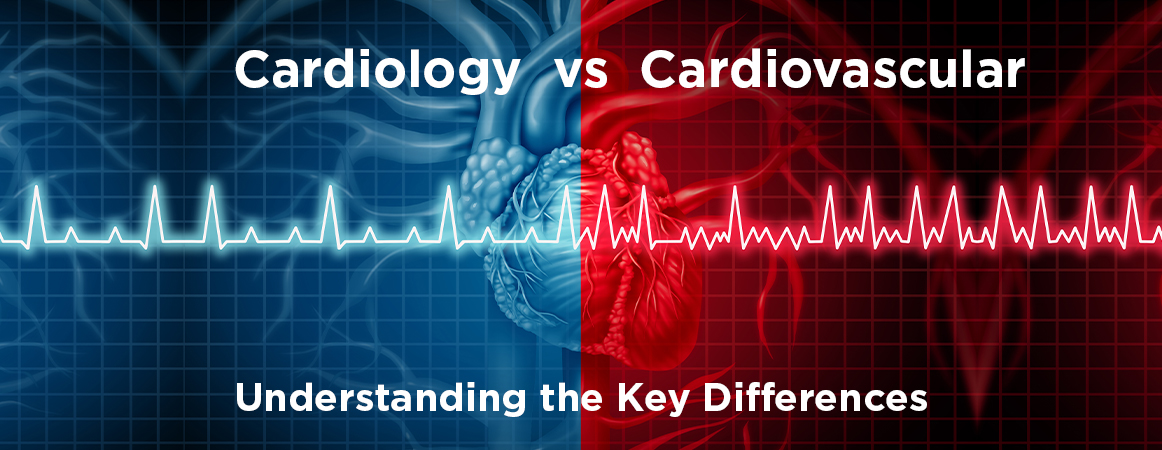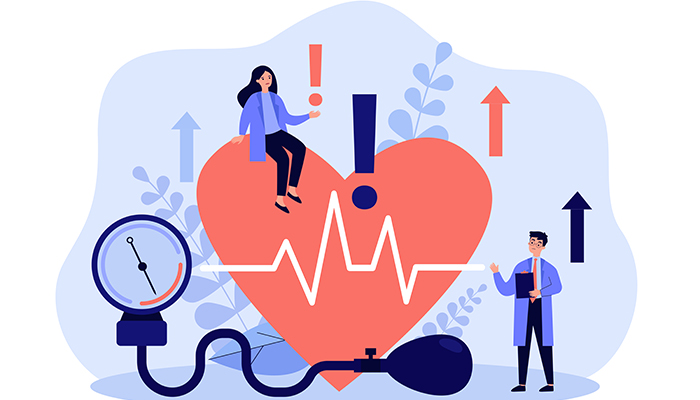The evolving science of Cardiology and its real-world benefits
Comprehending the Significance of Cardiology in Modern Healthcare Services
Cardiology plays an important function in contemporary healthcare, specifically as heart problem proceeds to be the leading root cause of death worldwide. Advances in diagnostics and treatment have actually transformed client care, making it possible for earlier treatments and improved results. The shift in the direction of preventive cardiology equips people to handle their wellness proactively. As technology remains to evolve, the combination of ingenious remedies might better redefine cardiology's effect on public health and wellness, motivating a more detailed examination of emerging fads and their implications.
The Occurrence of Heart Disease and Its Effect on Public Health And Wellness
Although cardiovascular disease remains the leading cause of fatality globally, its impact prolongs much beyond specific patients to impact public health and wellness systems and economic situations. The high prevalence of cardiovascular disease places a significant stress on healthcare sources, requiring enhanced funding for avoidance, rehabilitation, and treatment programs. Public wellness efforts need to attend to threat aspects such as excessive weight, smoking cigarettes, and inactive way of lives, which add greatly to the increasing incidence of heart conditions.Moreover, the economic worry associated with heart problem is immense, incorporating not only straight clinical prices but also indirect costs associated with lost productivity and early death. Communities encounter challenges in handling these costs, often bring about disparities in health care access and end results. As the population ages and lifestyle-related dangers continue to intensify, the urgency for effective cardiology interventions ends up being paramount. Dealing with heart illness is not only an issue of specific wellness yet additionally an essential public health and wellness top priority.
Breakthroughs in Heart Diagnostics and Imaging Techniques
Current developments in cardiac diagnostics and imaging strategies have transformed the area of cardiology, boosting the capability to check and detect heart problem. Methods such as cardiac MRI, CT angiography, and echocardiography have actually ended up being significantly advanced, offering comprehensive pictures of cardiac frameworks and features. These modalities enable the very early recognition of problems like coronary artery condition, heart failing, and valvular disorders.Moreover, innovations in non-invasive diagnostics, such as wearable innovation and remote monitoring tools, have encouraged people and doctor. These devices promote real-time monitoring of heart rhythms and various other crucial indications, causing prompt treatments. In addition, fabricated knowledge is being integrated into imaging evaluation, improving accuracy and efficiency in diagnosis.
Developments in Therapy Options for Heart Conditions
Recent developments in cardiology have actually resulted in substantial advancements in treatment options for heart conditions. These consist of advanced surgical methods that boost procedural results and emerging medicines that supply new avenues for treatment. As the field evolves, these innovations play an important function in improving person treatment and end results.
Advanced Surgical Techniques
Innovations in surgical methods have actually changed the landscape of cardiology, providing brand-new expect patients with heart conditions. Minimally intrusive treatments, such as catheter-based treatments, have actually substantially lowered recuperation times and health center keeps. Methods like robotic-assisted surgical procedure boost precision, permitting cosmetic surgeons to navigate complex physiological structures with greater precision. Advancements in imaging technology assist in real-time visualization during procedures, improving results. Transcatheter aortic valve replacement (TAVR) exhibits an innovation in treating aortic stenosis, enabling valve substitute without open-heart surgical treatment. Furthermore, hybrid techniques that incorporate surgical and catheter-based approaches provide tailored remedies for various heart issues. These sophisticated medical methods not just improve person safety however also increase treatment alternatives, highlighting the crucial function of innovation in modern cardiology techniques.
Arising Therapies and medicines
As the landscape of cardiology proceeds to evolve, arising treatments and medicines play a critical role in improving treatment options for heart disease. Developments such as novel anticoagulants and advanced lipid-lowering representatives have actually changed the administration of heart diseases, significantly reducing client morbidity and death. Furthermore, the growth of gene therapies and regenerative medication offers encouraging opportunities for treating problems formerly considered irreversible. Clinical trials are consistently exposing the efficacy of these treatments, pressing the boundaries of conventional treatments. The assimilation of digital health modern technologies helps with tailored medicine, permitting for customized treatment strategies based on hereditary and way of living factors. Jointly, these advancements emphasize the dynamic nature of cardiology, boosting patient outcomes and redefining criteria of care in contemporary health care.
The Function of Preventive Cardiology in Client Treatment
Precautionary cardiology plays an important function in client treatment by concentrating on the identification of threat aspects that add to cardiovascular disease. Via way of life modification approaches and very early detection methods, healthcare suppliers can effectively minimize the occurrence of cardiovascular occasions - Dr Garcia. This aggressive technique not only enhances client end results yet additionally promotes long-lasting health and wellness
Risk Aspect Identification
While cardiovascular conditions stay a leading source of morbidity and mortality worldwide, efficient danger element identification functions as a keystone of precautionary cardiology. Determining threat aspects such as hypertension, hyperlipidemia, diabetes, and family members background is crucial for very early treatment. Healthcare professionals use various evaluating techniques to assess these factors, permitting customized safety nets. In addition, comprehending a patient's lifestyle options, such as smoking cigarettes and physical inactivity, additionally notifies risk analyses. This comprehensive assessment enables medical professionals to establish tailored treatment plans targeted at mitigating risks. By prioritizing risk aspect identification, health care systems can boost individual end results and decrease the total concern of heart diseases, eventually adding to boosted public health techniques and source allocation.
Way Of Living Adjustment Strategies
A plethora of researches highlights the vital function of way of living modification strategies in reducing cardiovascular illness threat. These strategies include nutritional changes, raised exercise, cigarette smoking cessation, and weight monitoring. By adopting a heart-healthy diet plan abundant in fruits, vegetables, entire grains, and lean proteins, individuals can lower cholesterol levels and blood pressure. discover here Regular exercise reinforces the heart and enhances general cardiovascular wellness. In addition, quitting smoking significantly decreases the danger of heart problem and boosts recovery rates for those with status quo. Weight management better adds to cardio health by reducing other danger elements such as diabetic issues and high blood pressure. Executing these way of life changes not only advertises specific wellness however also works as a foundation of preventative cardiology in individual care.
Very Early Discovery Strategies
Lifestyle modifications considerably add to minimizing cardio illness threats, however they are most efficient when matched with early detection methods. Precautionary cardiology stresses the relevance of recognizing possible heart problems before they intensify right into major problems. Techniques such as blood pressure surveillance, cholesterol screening, and advanced imaging modern technologies like echocardiograms play critical functions in evaluating cardio health and wellness. Biomarkers and genetic testing also enhance the accuracy of early detection, enabling customized preventative strategies. Normal heart threat analyses empower medical care providers to interfere proactively, possibly avoiding cardiovascular disease and strokes (Cardiology care). By incorporating these early detection approaches into routine treatment, clients can gain from timely way of living treatments and targeted treatments, eventually enhancing results and boosting top quality of life
Integrating Innovation Into Cardiology Practices
As developments in technology remain to reshape numerous fields, the combination of ingenious devices and systems into cardiology techniques has become vital for boosting individual care and outcomes. Telemedicine systems permit cardiologists to monitor patients remotely, enhancing accessibility to care while reducing the burden on healthcare facilities. Wearable devices, such as smartwatches, allow constant heart rate surveillance, informing both patients and physicians to potential issues in real-time. Furthermore, expert system (AI) is being made use of to analyze vast quantities of heart data, aiding in early diagnosis and tailored treatment strategies. Advanced imaging techniques, consisting of 3D echocardiography, improve visualization of heart frameworks, resulting in much more specific interventions. Electronic wellness documents (EHRs) simplify individual info monitoring, making certain that cardiologists have instant access to crucial data. With each other, these technical improvements are transforming cardiology, advertising positive management and enhanced health results for individuals with cardio conditions.
The Importance of Patient Education And Learning and Involvement
Patient education and learning and engagement play a crucial duty in the administration of cardiovascular health. By equipping clients with understanding about their conditions, treatment alternatives, and way of life modifications, doctor empower individuals to take an active role in their treatment. This positive approach can bring about improved adherence to prescribed medications, nutritional changes, and workout programs, inevitably reducing the danger of complications.Engagement likewise fosters a strong patient-provider relationship, encouraging open communication and trust. When individuals really feel educated and entailed, they are a lot more most likely to voice concerns and ask questions, which can result in much better professional results. Additionally, academic resources, such as workshops or digital systems, can improve understanding and promote self-management strategies. In general, prioritizing patient education and involvement is necessary for improving cardiovascular health, boosting quality of life, and minimizing medical care prices connected with heart diseases.
Future Trends in Cardiology and Their Possible Impact

Regularly Asked Inquiries
What Way Of Living Adjustments Can Decrease Heart Disease Danger?
The present concern addresses lifestyle changes that can significantly reduce heart problem danger. Cardiology Jupiter. Embracing a balanced diet plan, participating in routine exercise, preserving a healthy weight, handling anxiety, and preventing tobacco can especially improve cardiovascular health and wellness
Just How Can I Identify Early Indicators of Heart Troubles?
Acknowledging i loved this early signs of heart troubles involves monitoring signs such as breast pain, shortness of breath, tiredness, and irregular heartbeat. Prompt recognition of these indications can motivate necessary clinical analysis and treatment for much better end results.
What Are the Differences In Between Cardiologists and Cardiac Surgeons?
The differences in between cardiologists and cardiac doctors lie in their duties; cardiologists mainly take care of and identify heart disease with non-invasive methods, while heart doctors perform surgeries to correct architectural heart problems. Each plays a crucial, distinct role.

How Often Should I Get My Heart Wellness Checked?
The regularity of heart wellness checks varies based on specific danger variables. Normally, grownups ought to undergo assessments every one to two years, while those with status quo may require even more regular evaluations as suggested by healthcare professionals.
What Duty Does Genetics Play in Heart Problem Threat?
Genes substantially influences cardiovascular disease risk, with domestic patterns showing inherited problems. Specific genetics can incline people to hypertension, cholesterol issues, and various other cardio problems, highlighting the relevance of hereditary screening in assessing heart health. Heart disease remains the leading cause of fatality globally, its effect expands much past private clients to influence public health systems and economies. Public wellness campaigns need to attend to danger aspects such as excessive weight, smoking cigarettes, and sedentary way of livings, which contribute considerably to the climbing incidence of heart conditions.Moreover, the economic burden linked with heart condition is enormous, encompassing not only direct medical costs however also indirect expenditures associated to lost efficiency and early death. Preventive cardiology plays a crucial role in person care by concentrating on the identification of threat variables that contribute to heart condition. Man-made intelligence (AI) and machine discovering are boosting diagnostics Recommended Reading and client monitoring, making it possible for very early detection of heart illness. The distinctions in between cardiologists and cardiac cosmetic surgeons exist in their duties; cardiologists mainly detect and handle heart conditions through non-invasive methods, while cardiac specialists carry out medical treatments to deal with structural heart problems.